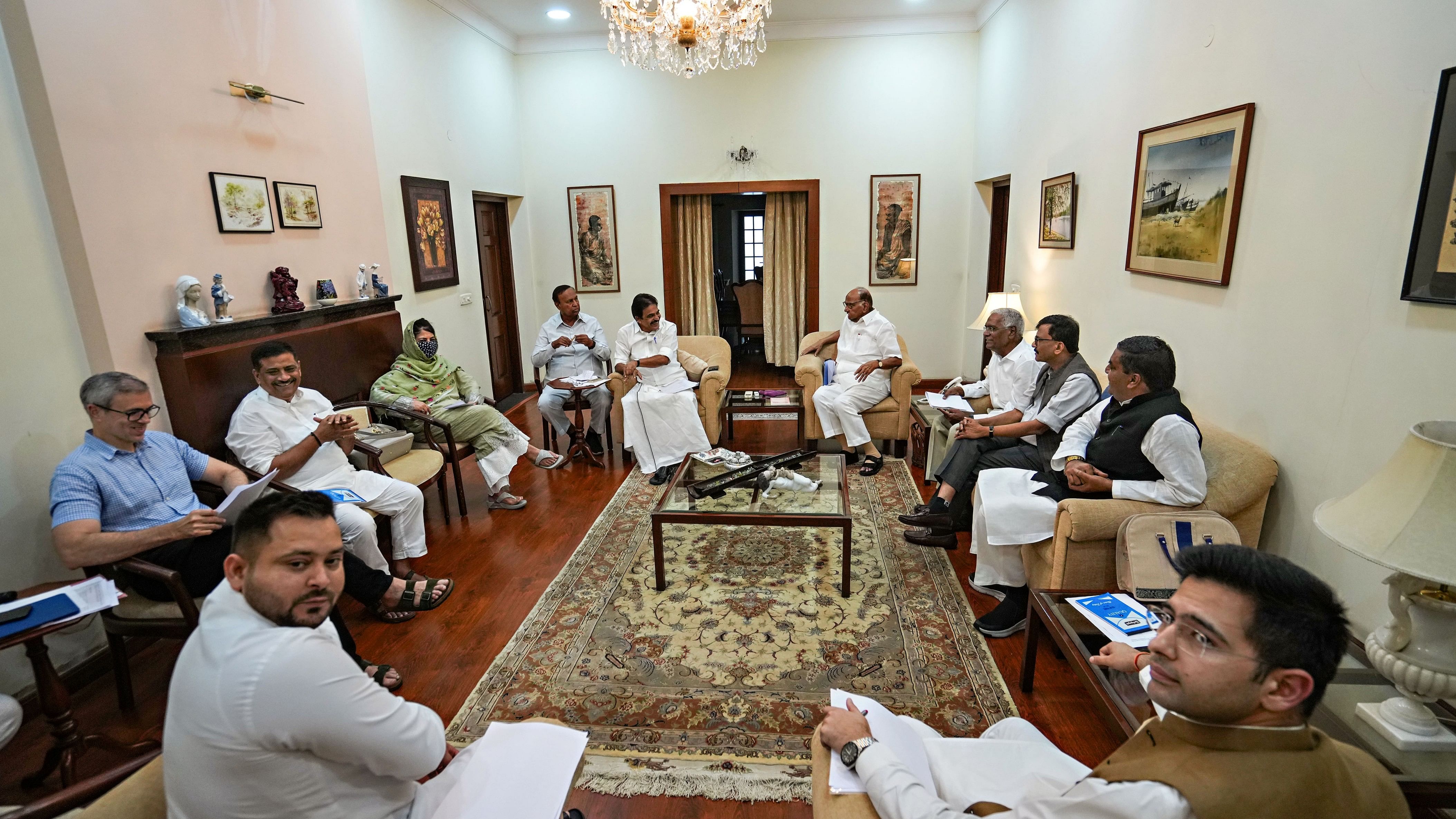
NCP chief Sharad Pawar, Congress leader KC Venugopal, PDP President Mehbooba Mufti, AAP leader Raghav Chadha, Bihar Deputy CM Tejashwi Yadav, J&K National Conference Vice-President Omar Abdullah and other Opposition leaders during the I.N.D.I.A meeting in Delhi.
Credit: PTI Photo
The December 3 assembly election results saw the Bharatiya Janata Party (BJP) win the three Hindi heartland states of Rajasthan, Madhya Pradesh, and Chhattisgarh, defeating the Congress in direct contests. The Congress won in Telangana, and the results to the polls in Mizoram will be out on December 4. While the BJP has reasserted its dominance in the heartland, the Congress continues its success south of the Vindhyas.
The big takeaway is that the heartland trusts Prime Minister Narendra Modi's guarantees in comparison with Congress’ promises, painting a strong position for the BJP in the upcoming 2024 general elections.
Brand Modi has further consolidated. The Opposition, mainly the Congress’ relentless personal attack on Modi has not resonated with the voters, as the BJP demolished conventional electoral wisdom while beating anti-incumbency in Madhya Pradesh.
The biggest relief for the ruling BJP is the diminishing influence of caste dynamics as a political lever against the Modi regime. Caste census was emerging as the main poll plank pushed by the Congress (and the I.N.D.I.A alliance) to blunt Modi's grand Hindutva electoral strategy. India’s political landscape witnessed the rise of caste-based political mobilisation in the 1990s, notably during the Mandal Commission era. However, the recent elections indicate a waning appeal for such stratagems. This is undoubtedly a positive sign for the BJP, particularly in the Hindi heartland, which traditionally plays a crucial role in shaping the composition of Parliament. The December 3 results show that the caste census factor is not working on the ground. This also means that in the 2024 polls, the BJP is likely to retain its earlier tally in Uttar Pradesh, and put up a decent fight in Bihar.
The results showcase the benefits to the BJP when its high command accommodates regional stalwarts. In Karnataka, the party leadership’s attempt to downplay B S Yeddyurappa’s role proved to be counterproductive, causing internal dissent, and resulting in an electoral setback. This time, the Modi-Amit Shah combine accommodated regional leaders Shivraj Singh Chouhan in Madhya Pradesh and Vasundhara Raje in Rajasthan, and the results are for everyone to see.
The success of Ladli Behna Yojna in Madhya Pradesh and the enduring popularity of leaders like Vasundhara Raje in Rajasthan demonstrate the effectiveness of targeted welfare schemes and strong leadership in influencing electoral outcomes.
The BJP's skilful management of internal contradictions distinguishes it from the Congress. Despite reported challenges with leaders such as Raje and Chouhan, the BJP projected a united front, resonating positively with the voters. In contrast, the Congress grappled with internal strife in Rajasthan, Madhya Pradesh, and Chhattisgarh, exposing a leadership divide that may have long-term repercussions, potentially undermining the party's cohesiveness and strategic effectiveness in future political endeavours.
South India stands as a critical battleground that demands the BJP's strategic attention. Despite the Congress making substantial gains in the region, the BJP must formulate a robust strategy. The party had optimistic expectations for a stronger performance in Telangana, especially following an impressive showing in the Hyderabad municipal polls. However, the Congress’ victory poses a setback for the BJP. The party's success in the 2024 elections is intricately linked to its capacity to make substantial inroads in the southern states, underscoring the strategic importance of this region in shaping the overall political landscape.
The good news for the BJP and the Congress is that the elections are increasingly turning bipolar. This is, understandably, bad news for the regional outfits. The results underscore a concerning trend for regional caste-based parties, signalling the beginning of the end of their era mainly in the Hindi heartland. This shift may translate into an advantage for the Congress, but it also poses challenges to the unity of the I.N.D.I.A coalition.
The December 3 results reflect that the BJP's 24X7 election machinery is well-oiled, its ability to deliver results is unquestionable, and showcases the party's resilience and organisational strength. Modi’s popularity remains a formidable asset, posing a significant challenge to the Opposition's prospects in the 2024 elections.
Depending on how the BJP navigates the political landscape in the crucial months before the 2024 elections, this round of assembly election results could either break the I.N.D.I.A alliance or force alliance members to rally behind the Congress.
(Mahendra Singh is a political commentator and teaches Political Science at DDU Gorakhpur University, Uttar Pradesh. X: @MKSinghGkp)
Disclaimer: The views expressed above are the author's own. They do not necessarily reflect the views of DH.